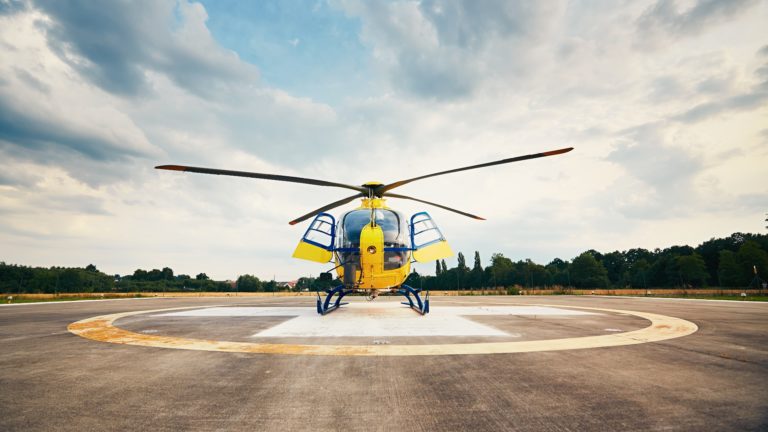*An opinion piece examining surprise costs of balance billing and the problems with surprise costs in the US, written prior to the No-Surprises Act in 2022, We haven’t found much useful information on the efficacy of the No-Surprises act as it is so new and the industry has been so opaque for so long. It is important to note that this does not seem to impact international air ambulance flights to the US, solely those within the US. Medicare does seem willing to cover the US portions of Diana’s Air Ambulance with a deductible.
Original Link | STAT | By Kevin Schulman, Barak Richman and Arnold Milstein

Although so-called surprise medical bills have become commonplace and routinely provoke outrage, even those numb to the staggering charges by hospitals are horrified by the avarice of many air ambulance companies.
Generating bills that can exceed $500,000, air ambulances are the giant squid of surprise bills that suffocate unsuspecting patients. One air ambulance bill sought $54,727 from a Bismarck, N.D., woman for a transport that would have taken less than one hour by ground, even after a ground ambulance had already arrived at the scene and had stabilized her. Her insurance paid for less than $14,000, leaving her with a $41,029 bill.
These staggering charges are caused by a confluence of market failures. First, as with all surprise bills, the price is hidden. When patients can’t shop for less-expensive alternatives, they are stuck with inflated prices. But hiding prices — and then allowing providers to charge outrageous amounts after service is provided — also fuels excessive supply, since many providers are eager to capitalize on the inflated profits.
Economists have long focused on the concept of moral hazard, in which demand increases because insurance pays for a large portion of the bill. The story of air ambulance bills illustrates the impact of moral hazard on suppliers, where both price and quantity of services are artificially inflated.
The investor community is already cashing in on these market distortions. Air ambulances are so wildly lucrative — their charges far exceed their costs — that private equity investors have fueled most acquisitions since 2011. Three for-profit providers now control two-thirds of all medical helicopters. And the effects of supplier moral hazard are bearing out, increasing both price and supply: The influx of investment has caused the U.S. air ambulance fleet to double in size in the past 15 years, and a Government Accountability Office report found that the median price for air ambulance services doubled from 2010 to 2014.
Simultaneous increases in both supply and price might befuddle economics majors, but it doesn’t astonish those familiar with surprise bills.
High and surprise air ambulance bills are the most recent iteration of a familiar problem. They emerge from the same billing strategy employed by hospitals and other providers, in which a provider cares for a patient in a setting in which public or private insurance does not predetermine the price for that service. Under such circumstances, usually arising from out-of-network care or care for the uninsured, providers claim they are entitled to charge whatever they want. They then point to their chargemaster — a master list of prices that providers unilaterally determine and that are routinely far higher than prices agreed to by commercial insurers and Medicare — and aim to collect the extortive amount from insurers or patients.
We and many others have written about the dangers of surprise bills. They are now widely understood to be a problem in need of a regulatory solution. The emergence of the especially egregious charges by air ambulances is a stark indication that policymakers have not yet solved this pervasive problem.
Air ambulances illustrate that the harm from surprise bills is not just high prices secretly charged to vulnerable patients. Prices are important for consumers, but they are also vitally important signals in a market, and economic harm results when charges cannot be readily compared to market prices. When market prices are absent or hidden, providers can charge whatever they want, and private equity follows the lucrative opportunity.
Inflated prices then fuel a feedback loop. High prices encourage providers to generate more output, so they invest in additional capacity — capacity that would not have been economically viable in the presence of market discipline. And they continue to do so until their marginal costs finally meet the elevated price they can charge.
This cycle of overinvestment reveals the dynamic costs of chargemaster strategies. For these reasons, society should worry when private equity invests in specific health care services with the kind of gusto it has invested in air ambulances. Private equity investment might be the flashlight that illuminates the health sector’s costliest distortions.
The cycle of overinvestment also reveals how health markets with overcapacity can dupe regulators. When policymakers eventually question the need for high prices, suppliers point to their costly investments and suggest that the service is not exceedingly profitable. Yet that is a false analysis: The marginal service would never have existed if managers had been forced to make investment decisions based on the establishment of a reasonable market price. Prices and costs after overcapacity reveal nothing about whether the market is working as it should. As a result, the price of services in a market distorted by chargemaster strategies should never be considered the market price.
Air ambulances offer two important lessons. The first is that hiding prices not only imposes enormous harm on consumers, but also inflicts real harm on the rest of the market. Hidden prices induce excessive investment from financiers and elevate costs by suppliers, producing markets that extract immense health care dollars while providing patients with very little value. We should not confuse profit with value, and we should be leery when investors exhibit noticeable enthusiasm for a certain health care service.
Second, effective solutions to the surprise bills problem require forcing price disclosure. Current efforts that merely prohibit the worst excesses, correct outrageous bills through arbitration, or pass these costs onto insurance companies (thus increasing health insurance premiums) will continue to mute the price signals that are necessary to harness the benefits of market forces.
Fortunately, the solution to stop surprise air ambulance bills is the same as the solution for stopping surprise bills throughout the health sector: require the disclosure of prices before services are provided, and if they aren’t disclosed, permit providers to collect no more than average market prices. This simple intervention, rooted in rudimentary contract law, would also correct the regulatory vacuum that air ambulance companies have claimed under the Airline Deregulation Act, which thus far has allowed them to escape regulatory curbs on their excesses.
If health care providers and air ambulance companies can collect only prices they have adequately disclosed — a simple constraint that the law applies fastidiously in all other industries — then normal market mechanisms can create market prices, reward managers for investment decisions that create real value, and protect consumers against naked abuses.
Kevin A. Schulman, M.D., is a professor of medicine at Stanford University. Barak Richman, J.D., is professor of law and business administration at Duke University. Arnold Milstein, M.D., is professor of medicine and director of the Clinical Excellence Research Center at Stanford University.





